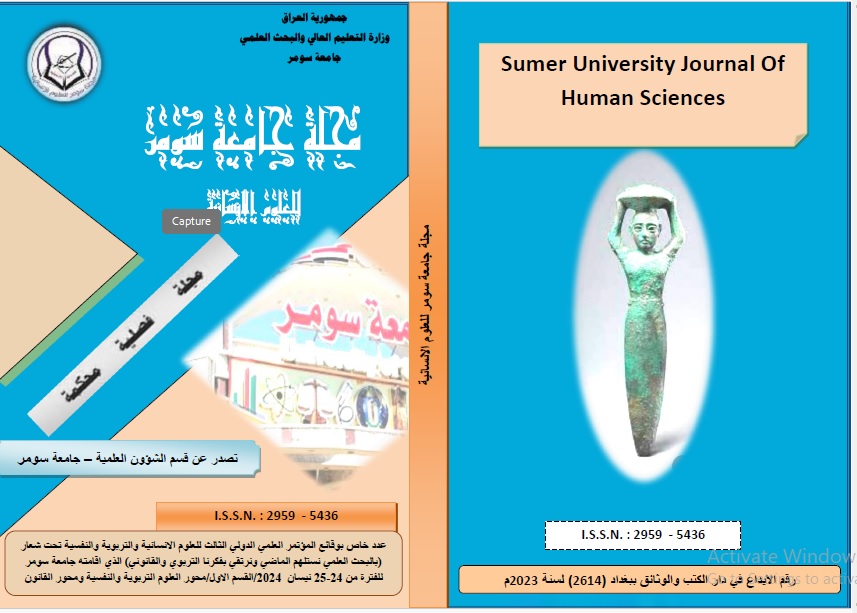The Effectiveness of the Four R Strategy on the Achievement of Second-Grade Intermediate Students and their Analogical thinking
Keywords:
الكلمات المفتاحية: استراتيجية Four R، التفكير التناظري.Abstract
The research aims to identify the effectiveness of the Four R strategy in the achievement of second-year intermediate students and their analogical thinking. The researcher formulated the following two null hypotheses:
- The first null hypothesis: There is no statistically significant difference at the level (0.05) between the average grades of the second-year intermediate students of the experimental group who studied according to the Four R strategy and the average grades of the second-grade intermediate students of the control group who did not study according to the Four R strategy in the test. Collection.
- The second null hypothesis: There is no statistically significant difference at the level (0.05) between the average scores of the second-year intermediate students of the experimental group who studied according to the Four R strategy and the average scores of the second-year intermediate students of the control group who did not study according to the Four R strategy in the thinking test. Analogue.
To achieve this, an experiment was conducted that lasted two months. The researcher chose the success medium for boys, and the second intermediate students, who numbered (68), were divided using a simple random assignment method into two groups, with (33) students for the control group, and (35) students for the experimental group. The two groups were rewarded on the variables (chronological age, intelligence), and the researcher adopted an experimental design with partial control for two equivalent groups (experimental and control), and extraneous variables were also controlled, and the experiment was applied in the first semester of the academic year (2023 - 2024) AD. As for the two tools In the research, the researcher used one tool for each dependent variable. An achievement test consisting of (46) items was constructed according to a table of behavioral specifications and purposes, with (36) multiple-choice items and (10) essay items, and a test for analogical thinking consisting of (26) items. It measures analogical thinking among second-year middle school students. The validity of the two tools was verified by presenting them to a group of arbitrators in the fields of measurement, evaluation, teaching methods, and psychology. Their apparent validity was extracted and applied to two exploratory samples, one of which was to determine the extent of the clarity of the paragraphs, the clarity of the instructions, and the response time, and the other was For the purpose of statistical analysis to extract discriminatory power and construct validity, and to extract the coefficient of difficulty and discrimination, construct validity and effectiveness of false alternatives, as well as to extract reliability for both tools, and after completing the experiment, the results were analyzed statistically using a t-test for two independent samples, and the results concluded that there was a statistically significant difference in favor of the experimental group. In achievement and analogical thinking among second-year intermediate students.
Published
Versions
- 2024-12-15 (2)
- 2024-07-10 (1)


